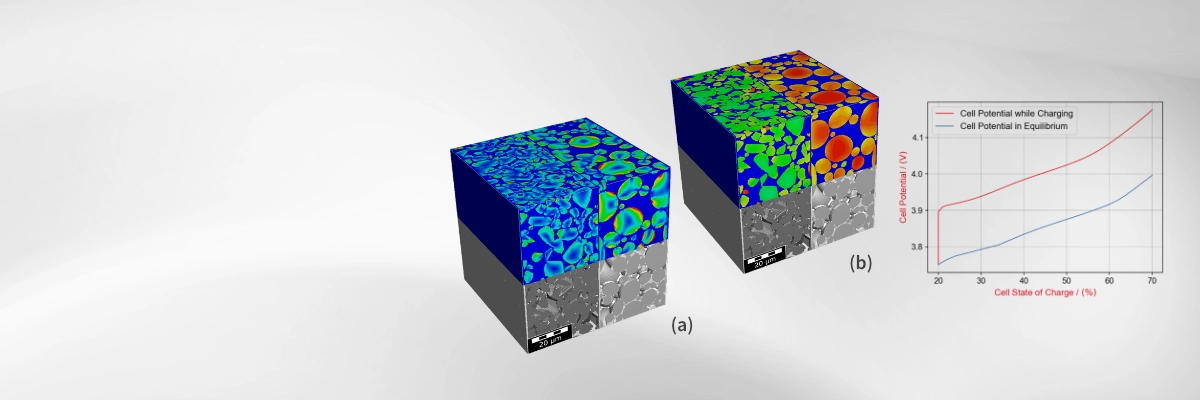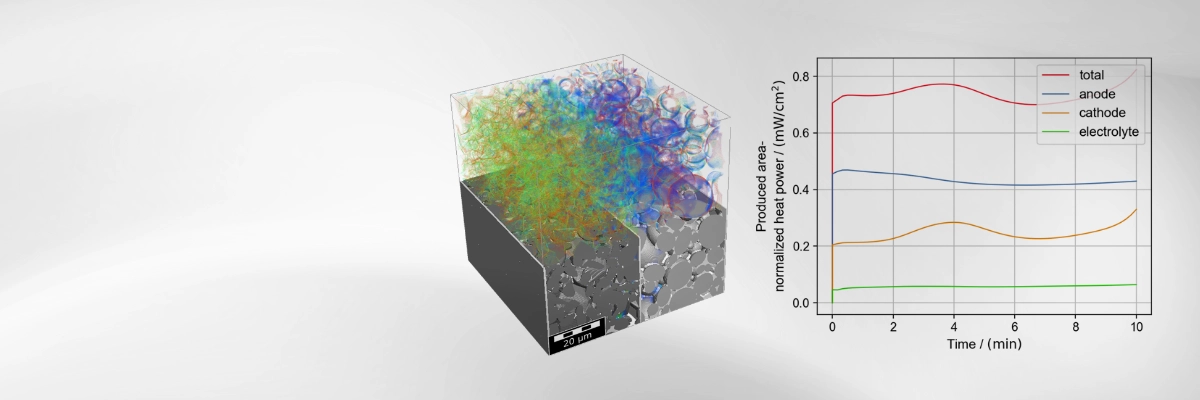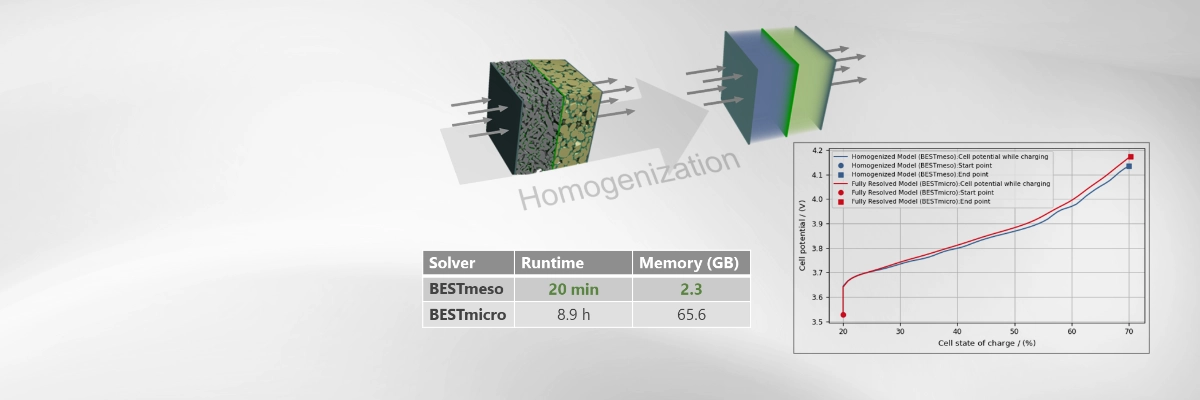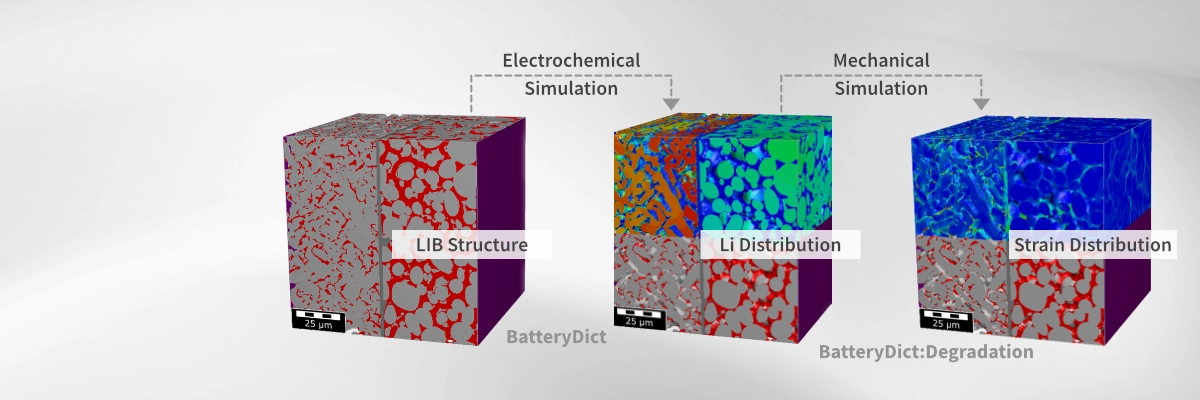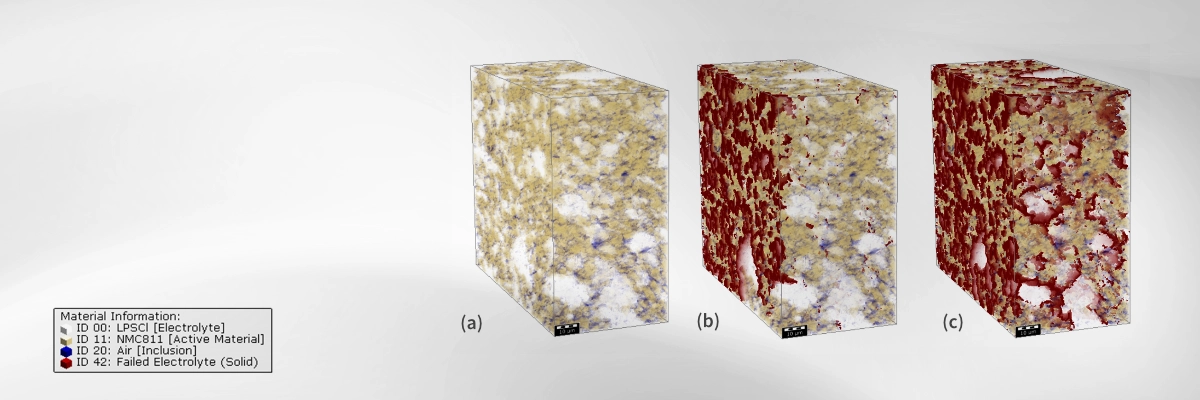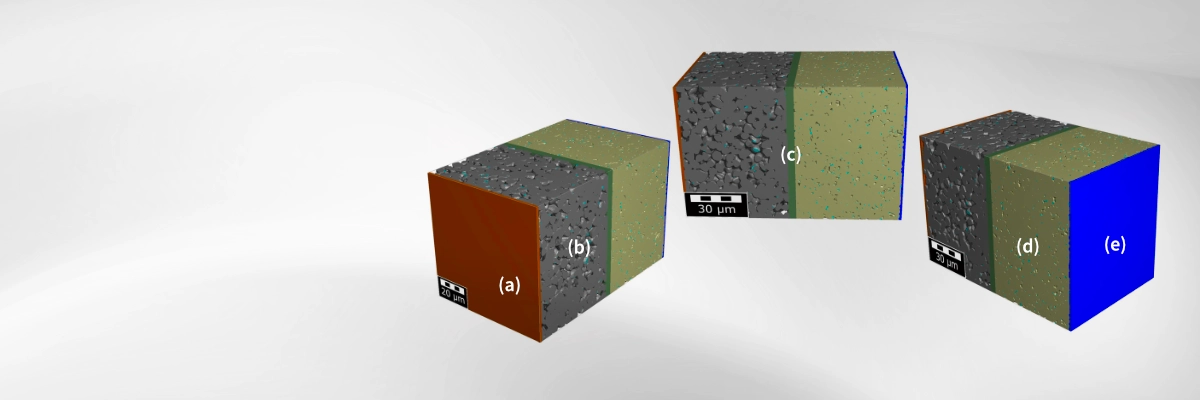Modeling & Simulation Software for Li-ion Batteries
BatteryDict
Modern lithium-ion batteries face demanding requirements: higher energy density, faster charging, improved safety, and longer lifespan. At the same time, challenges such as degradation, heat generation, lithium plating, and innovative concepts like solid-state batteries add significant complexity to the development process.
The BatteryDict module of GeoDict provides a comprehensive digital solution for battery research and development. It enables the modeling of complete battery cells and the simulation of electrochemical cycling for in-depth analysis, either through detailed, fully-resolved 3D simulations or fast homogenized approaches. Beyond lithium-ion systems, the same advanced technology also supports realistic modeling and simulation of sodium-ion batteries.
Two powerful solvers are available for the simulations:
- The LIR solver developed by Math2Market
- The BEST solver (Battery and Electrochemistry Simulation Tool) from the Fraunhofer Institute for Industrial Mathematics (ITWM)
BatteryDict key features
Electrochemical and Thermal Analyses
- Creation of charge/discharge curves under user-defined boundary conditions (constant current, constant voltage, power density, charge rates).
- Comparison of the simulated cell potential with the open-circuit voltage to identify overpotential components and evaluate overall battery performance.
- Calculation of the heat output generated during cycling as a result of overpotentials.
- Observation of relaxation processes and Li-ion concentration changes within particles during charging.
Material and Degradation Studies
- Analysis of mechanical stresses and strains during intercalation to predict degradation.
- Estimation of the risk of lithium plating under various charging conditions.
- Execution of half-cell studies to investigate the electrochemical behavior of individual cathode and anode materials.
Charge Battery
Simulate battery charging and discharging with multiple solver options. All solvers support concentration-dependent parameters in the electrolyte and active materials.
Fully-resolved Simulation:
- LIR solver: Fast and remarkably memory-efficient for large structures.
- BESTmicro: Feature-rich solver featuring latest academic innovations, such as electrochemical impedance spectroscopy (EIS).
Homogenized Simulation:
- BESTmeso: enhanced P2D Newman-model using calculated effective parameters directly from the microstructure
- Calculate all effective parameters for your customized P2D Newman-models easily from the microstructure
- Faster execution with lower memory requirements
- Ideal for large structures where local variations are less critical
Degradation
The BatteryDict-Degradation Add-on:
- Uses the FeelMath mechanical solver
- Computes stress and strain in a battery structure due to lithium intercalation
- Visualizes volume changes during cycling
- Identifies stress and strain maxima
- Help optimize electrode structures
- Help reduce mechanical degradation
- Enhances expected electrode lifetime
| Basic | GeoDict Base | ||
| Image Processing and Image Analysis | ImportGeo-Vol | ||
| Material Analysis | GrainFind(-AI) | PoroDict + MatDict | |
| Modeling & Design | GrainGeo | ||
| Simulation & Prediction | ConductoDict | DiffuDict | ElastoDict |
Suitable modules depend on the concrete application.


